'Underwater Christmas trees' help restore key habitat
- Published
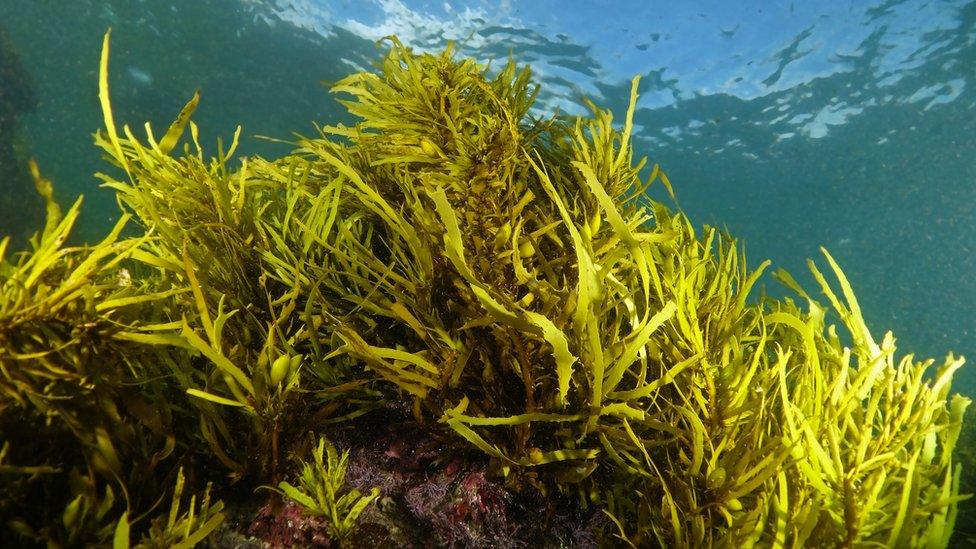
The crayweed (Phyllospora comosa) plays a central role in the marine ecosystem on the shallow reefs around Sydney
Australian researchers are encouraging people to buy "underwater Christmas trees" to help restore seaweed that suddenly disappeared in the 1980s.
Poor water quality was blamed for the loss of crayweed from 43 miles (70km) of coastline around Sydney.
But as the water quality has improved, scientists are now replanting the seaweed that provides a vital habitat and food for marine life.
Scientists expect the replanted seaweed to recolonise the shallow, rocky reefs.
"These forests of seaweed are very important, not only because they provide important habitats and food for many little creatures, some of which are commercially very important, they can also sequester a significant amount of carbon," explained project leader Ezequiel Marzinelli, a senior research associate at the University of New South Wales.

Researchers use metal mesh to attach the crayweed to the reefs
He added that the species Phyllospora comosa was abundant in the area's temperate waters but then disappeared suddenly in the early 1980s.
"At that time, the sewage was not very well treated and it was pumped right onto the coast and the water quality was really bad," said Dr Marzinelli.
"However, in the early '90s the sewage treatment improved and the water quality improved significantly."
Plentiful sex
He explained that research suggested that the seaweed's offspring did not like poor water quality so there was a strong correlation between the poor water quality at that time and the disappearance of these vast underwater forests.
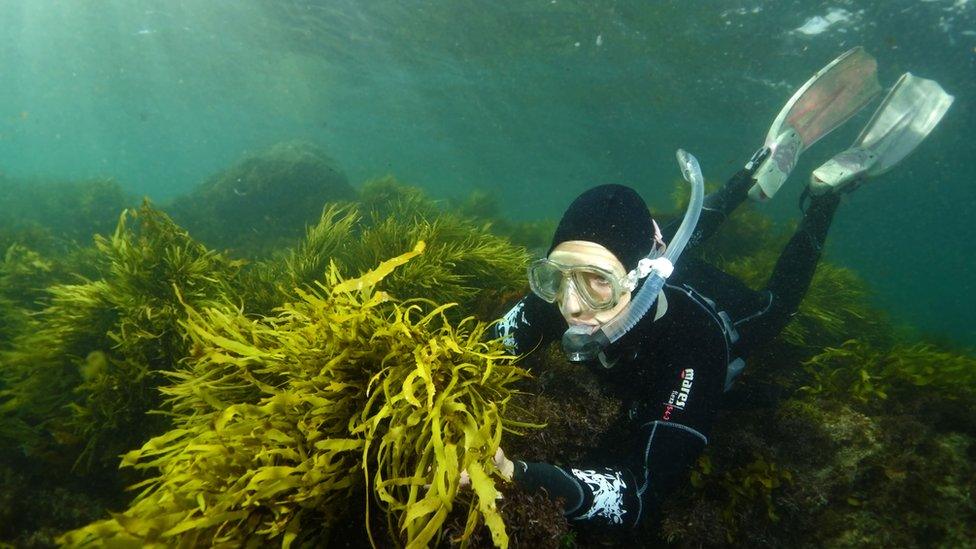
The project is helping to restore life to areas that had lost its crayweed and the species that depended on the seaweed
As the seaweed had disappeared, it was necessary to reintroduce it as part of a restoration project.
"We did a number of small-scale experiments in some places where we planted a number of adult plants, both male and female," Dr Marzinelli told BBC News.
"Not only did they survive but they also reproduced very well - they basically had a lot of sex. We found a lot of babies colonised the area immediately around the plants we had transplanted.
"After about two or three years, those babies became adults themselves and started reproducing."
He said the underwater forests that began with the replanting of the plants now stretch a couple hundred of metres away from the original replanting location.
The results of the project to date have been very encouraging, he added, and the return of the crayweed has seen a return of animals that form an important link in the ecosystem's food chain.
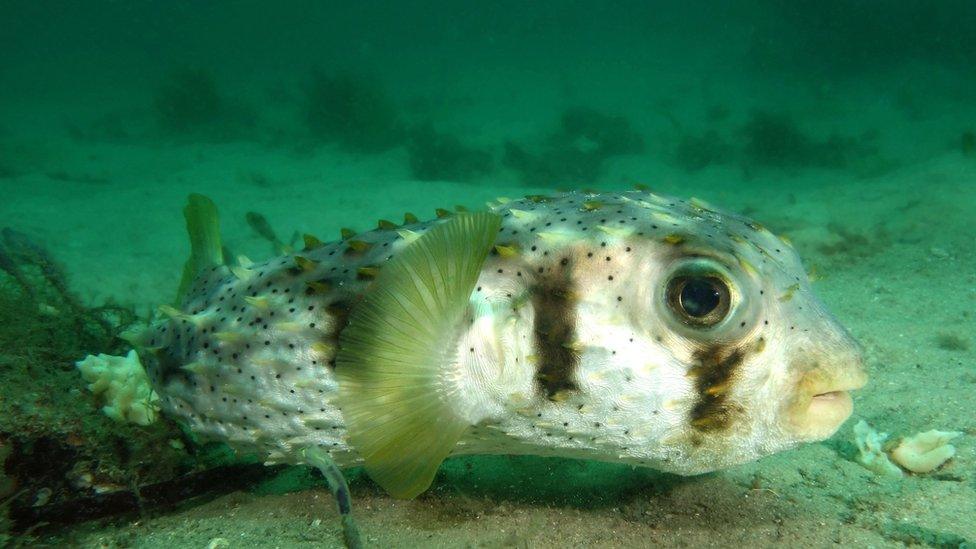
The "forest" supports many species, including the threebar porcupine fish...
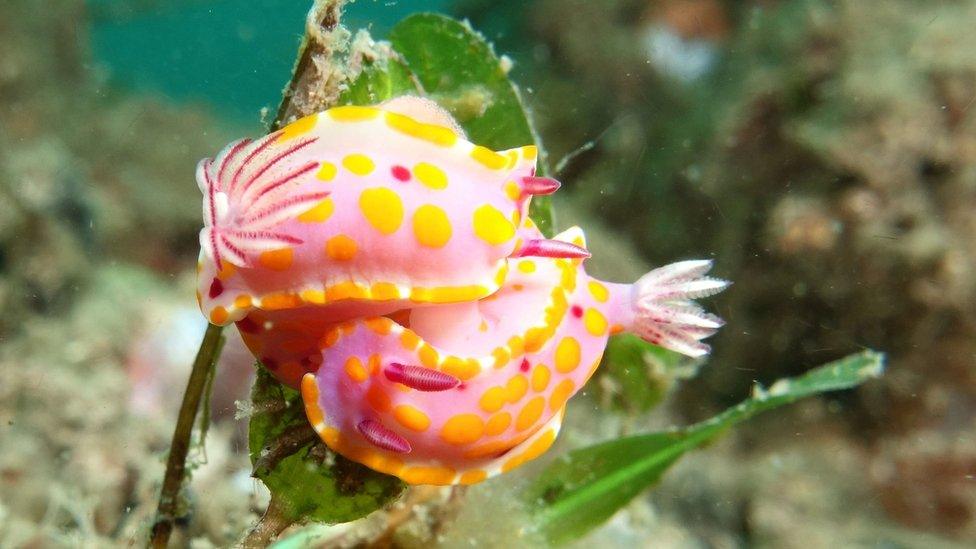
...and the sweet ceratosoma
"It is still a little too early to see the establishment of lobster populations but the smaller animals that provide food for them have returned," Dr Marzinelli said.
The waters along the Sydney coastline are very popular with people who live in the area and use the waters for recreation, such as divers, fishermen and surfers.
"People care about their beaches and the water environment, however most people do not realise that seaweed are important," Dr Marzinelli observed.
In order to expand and accelerate the replanting project, his team has set up a crowdfunding website, external to raise money as well as awareness of their work.
He suggested: "People can go onto the website and buy an underwater Christmas tree, either for themselves or for family and friends."
- Published4 July 2013
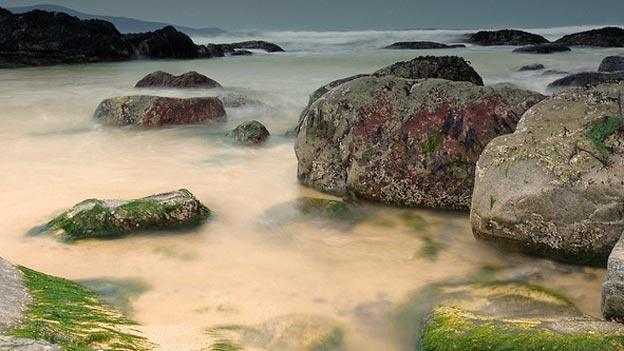
- Published2 October 2010